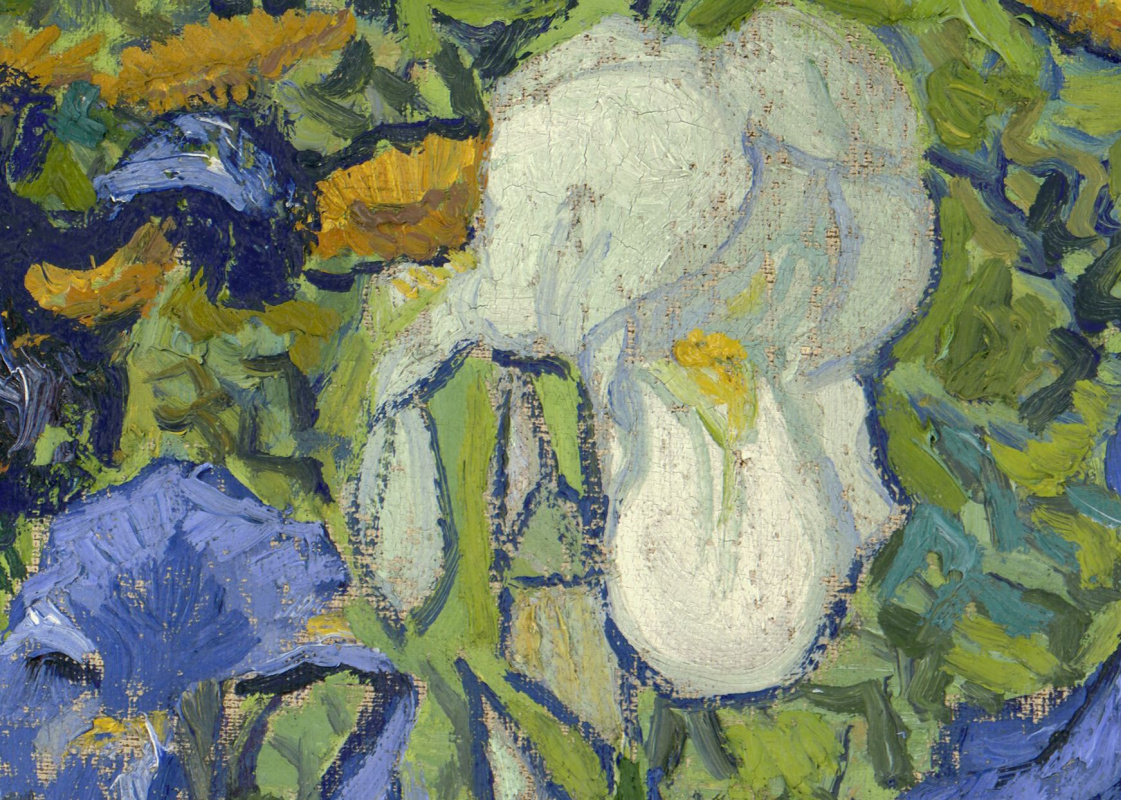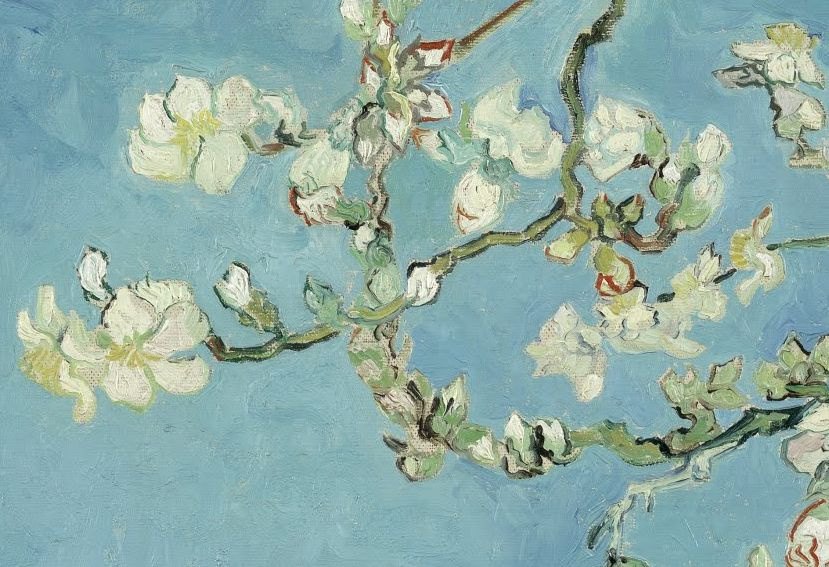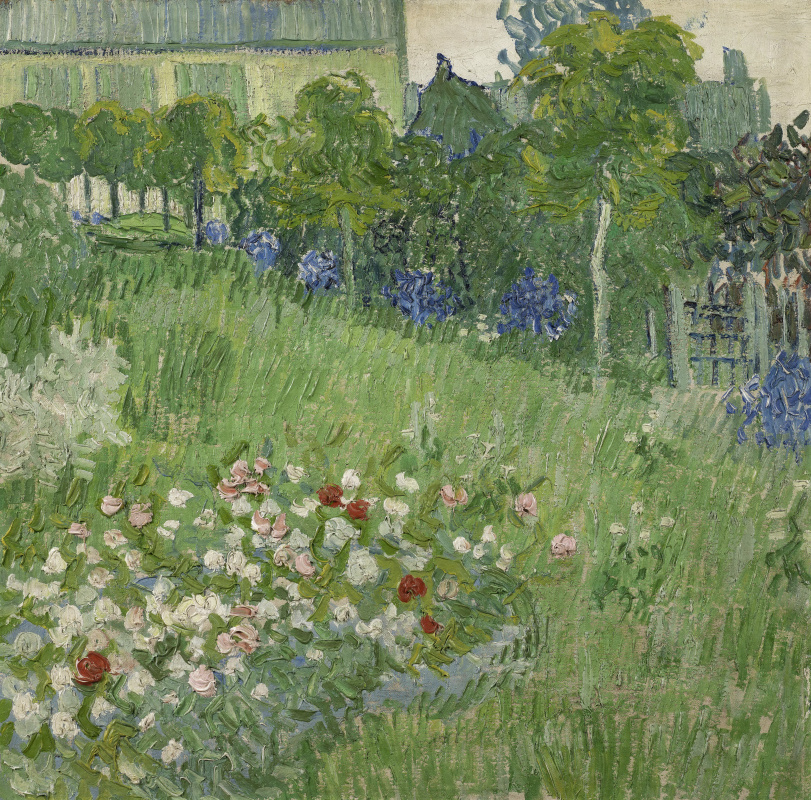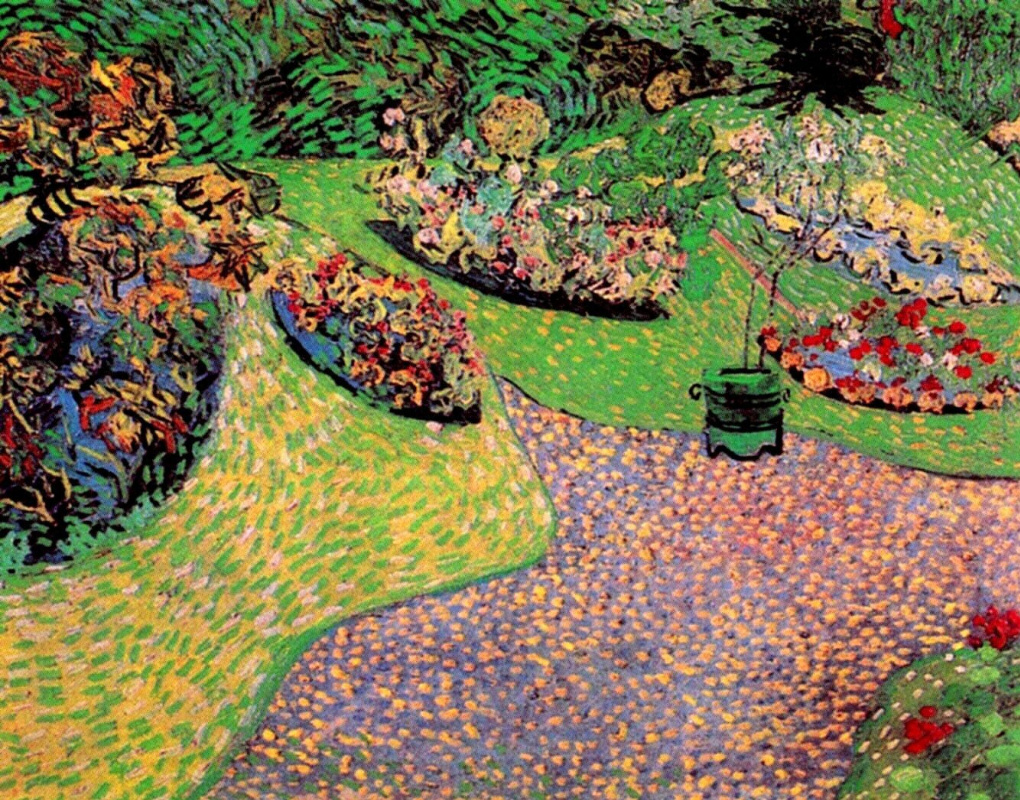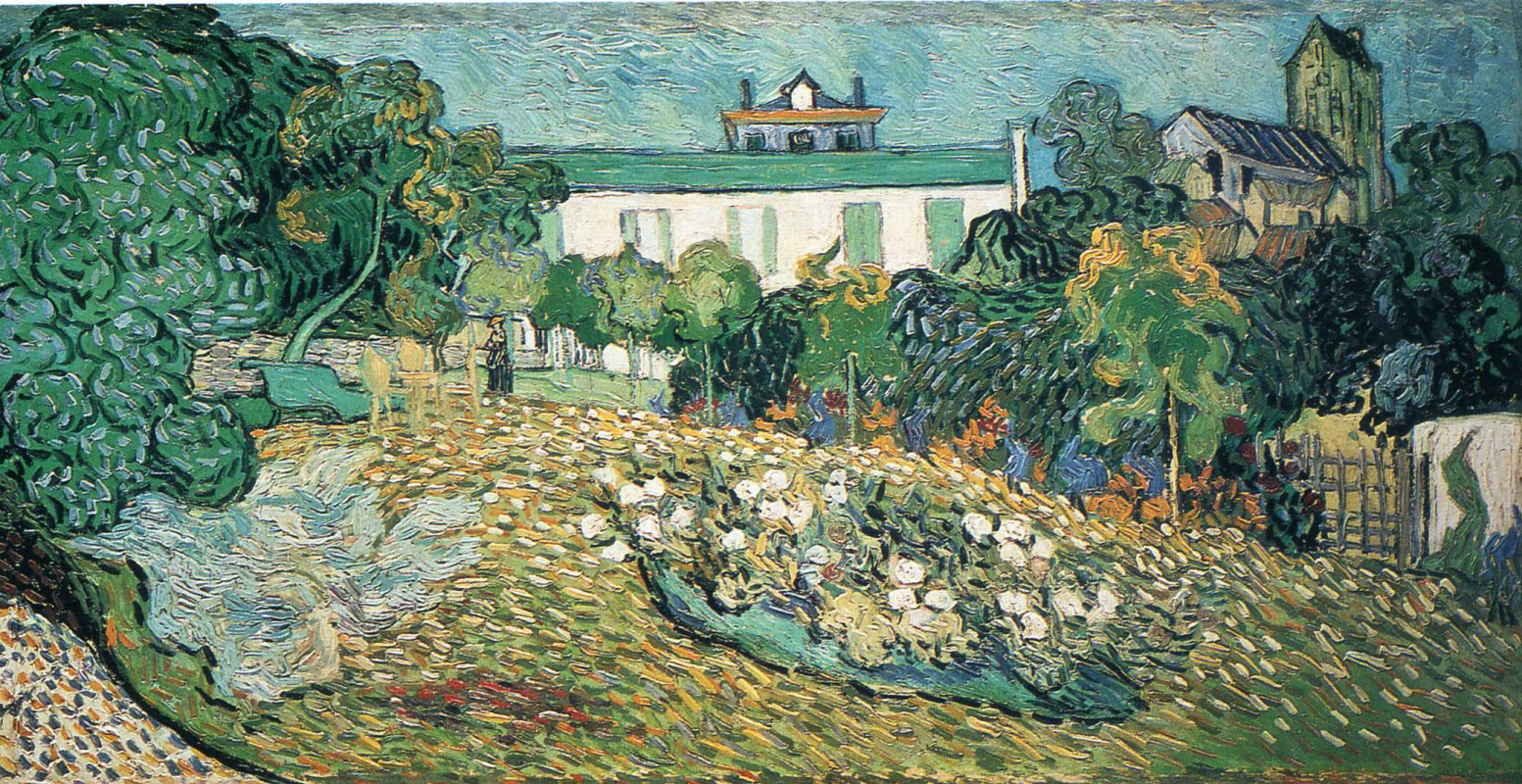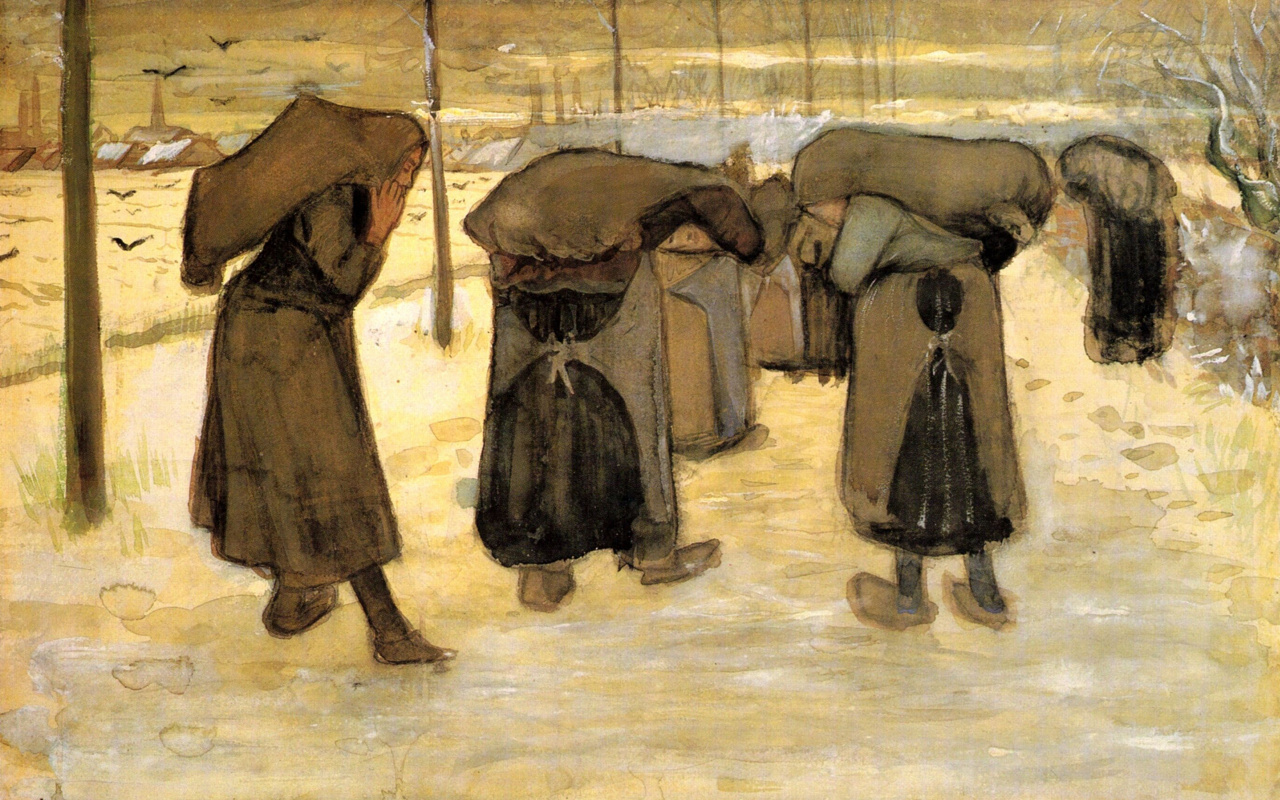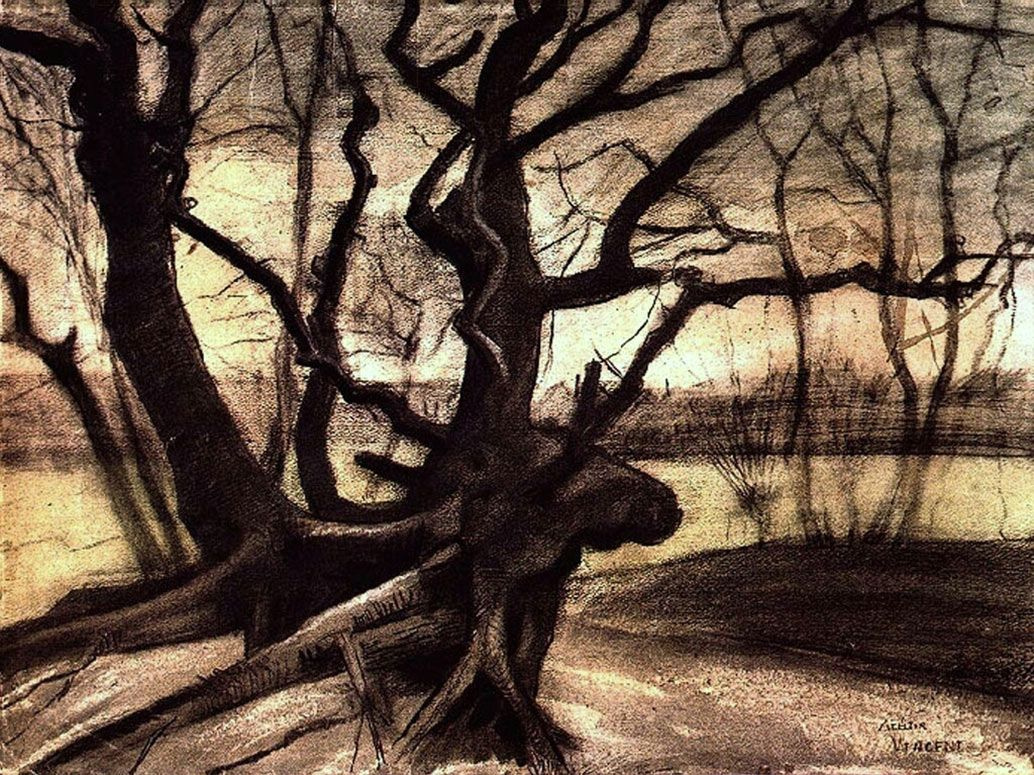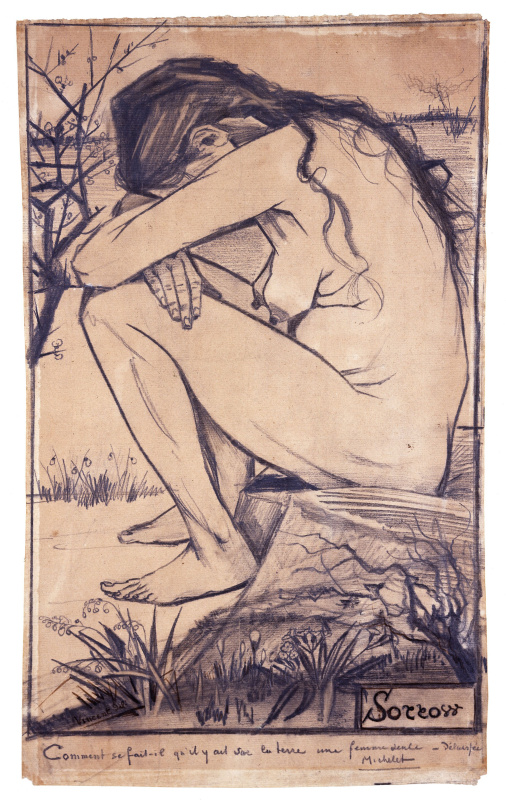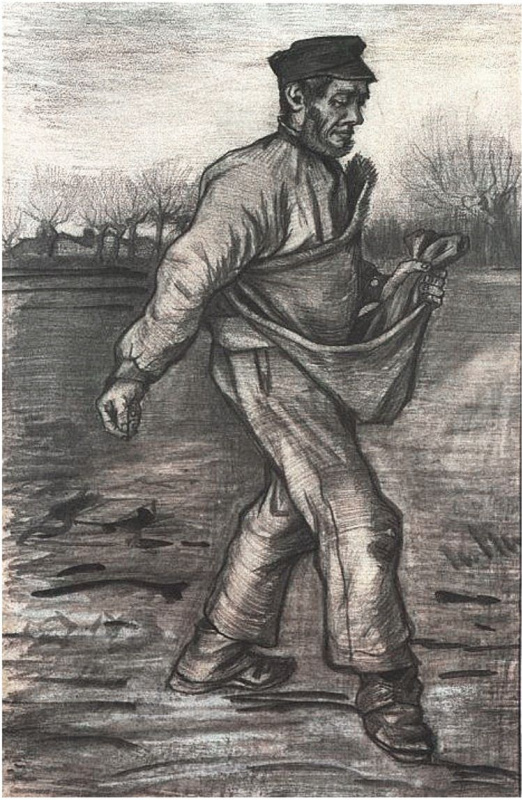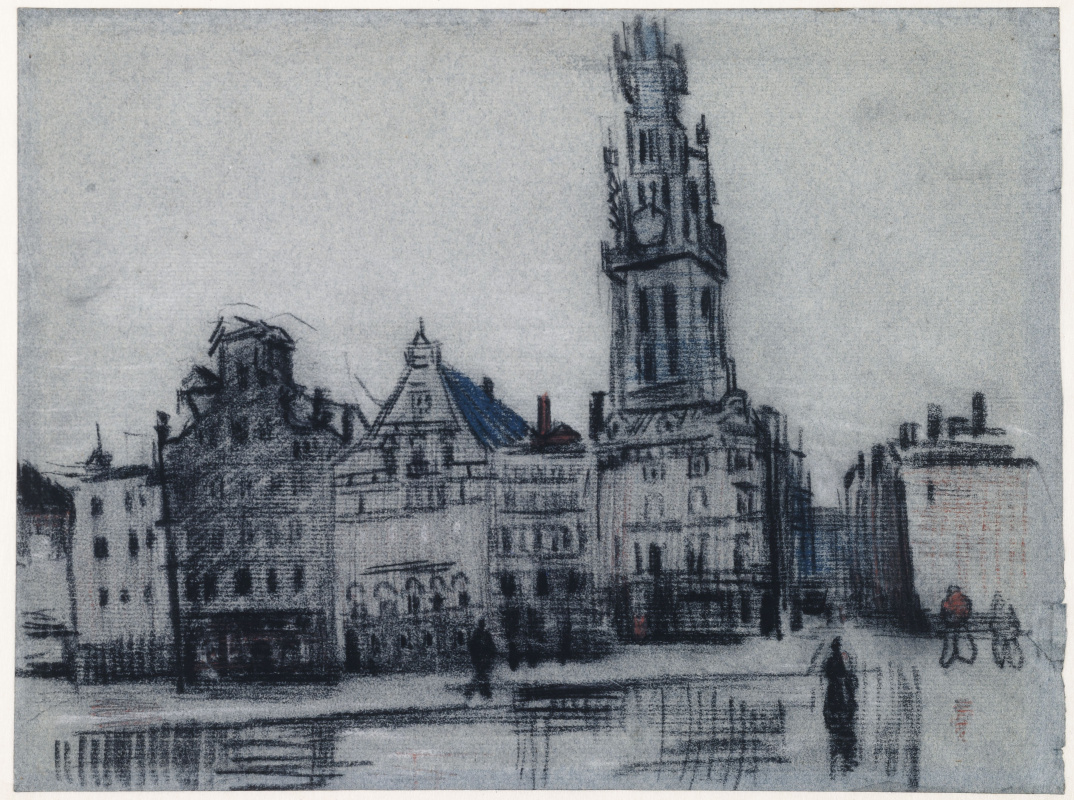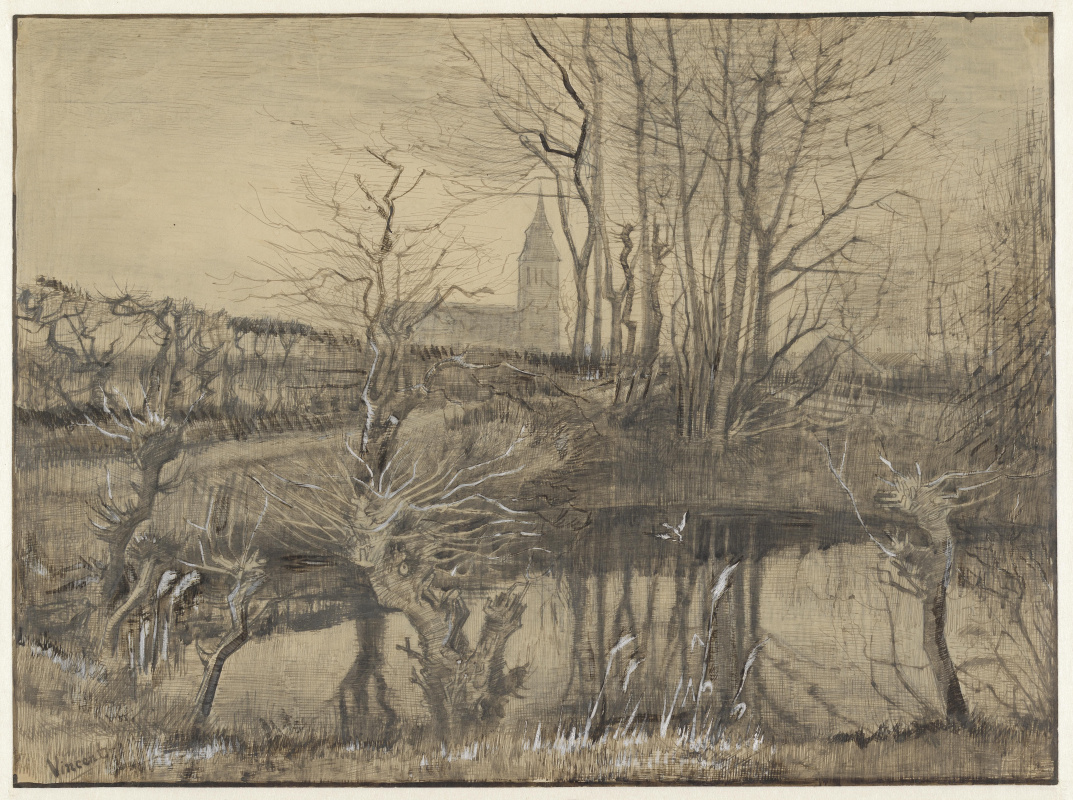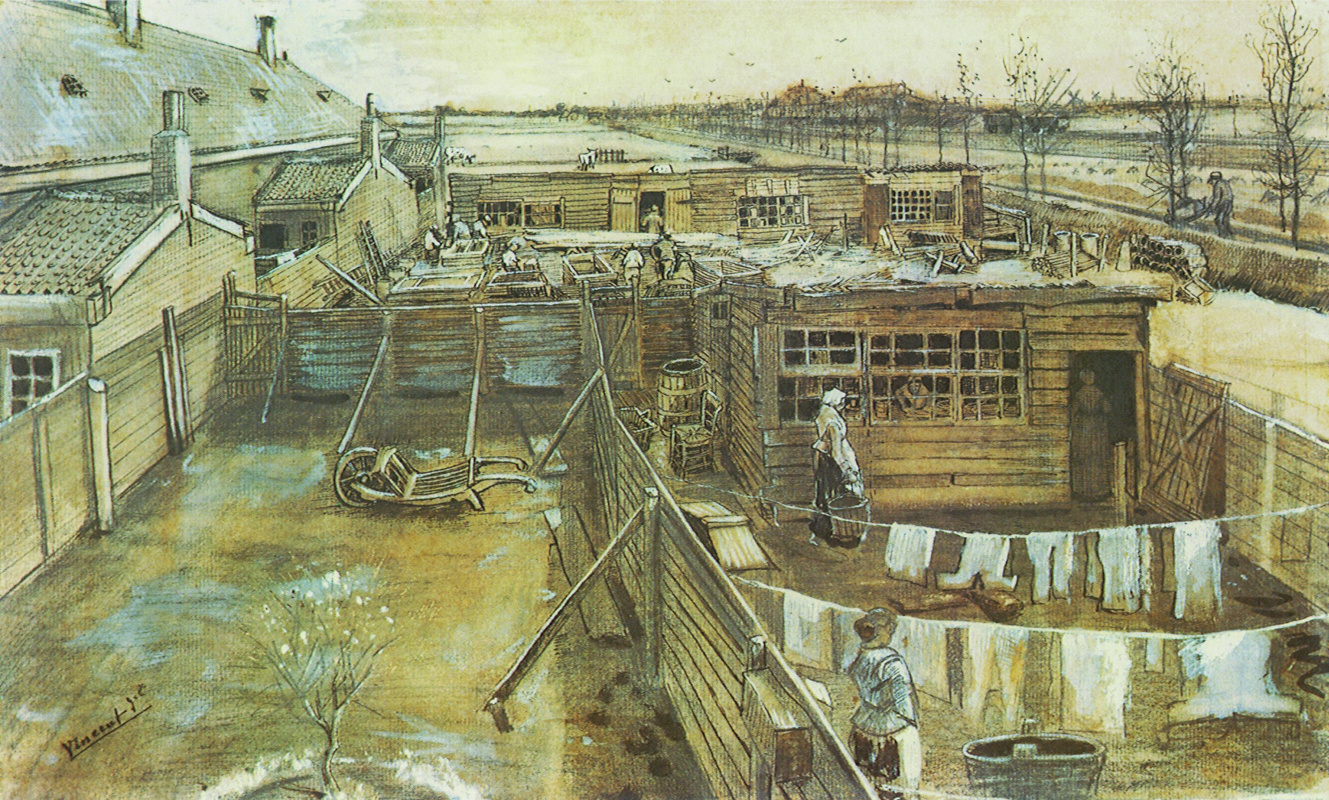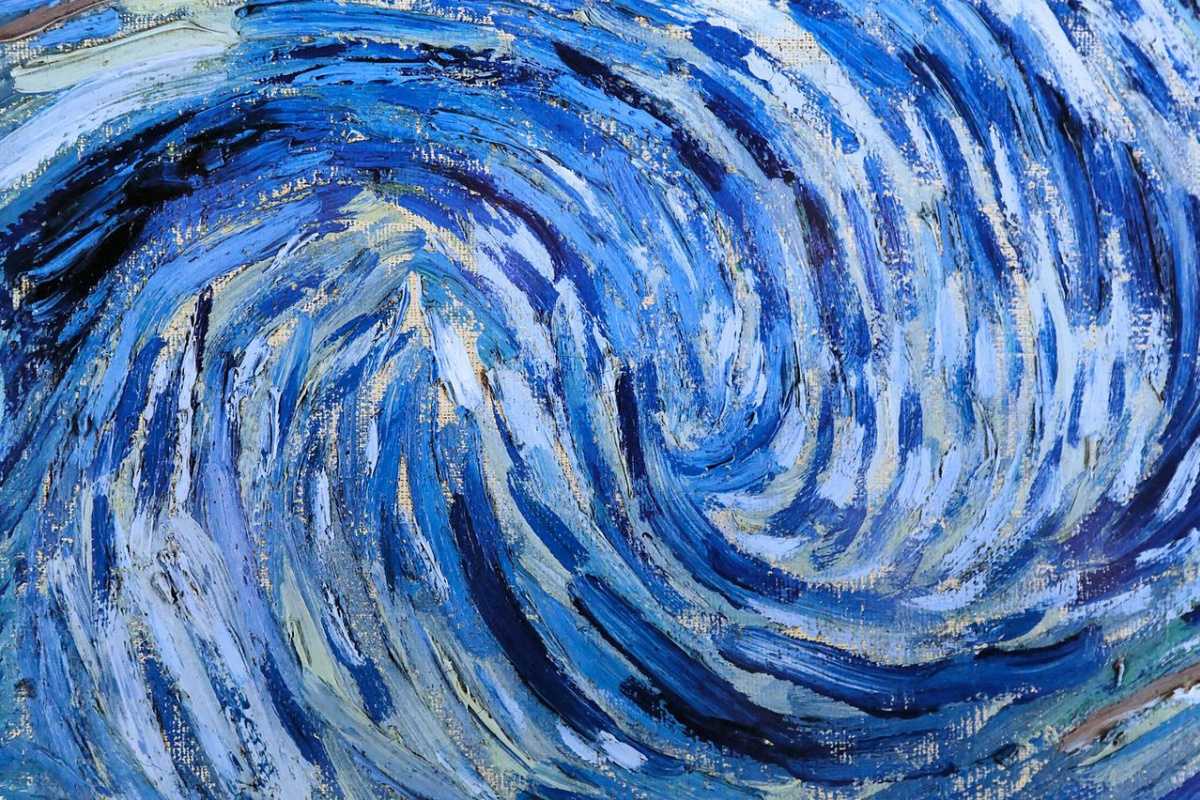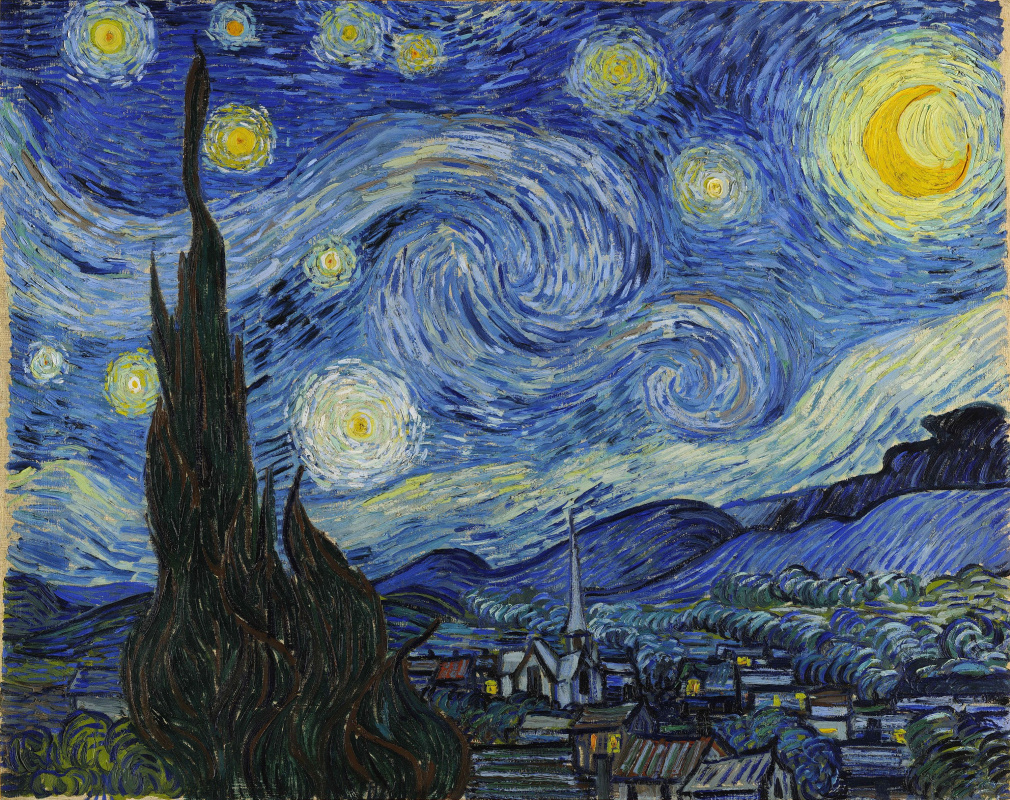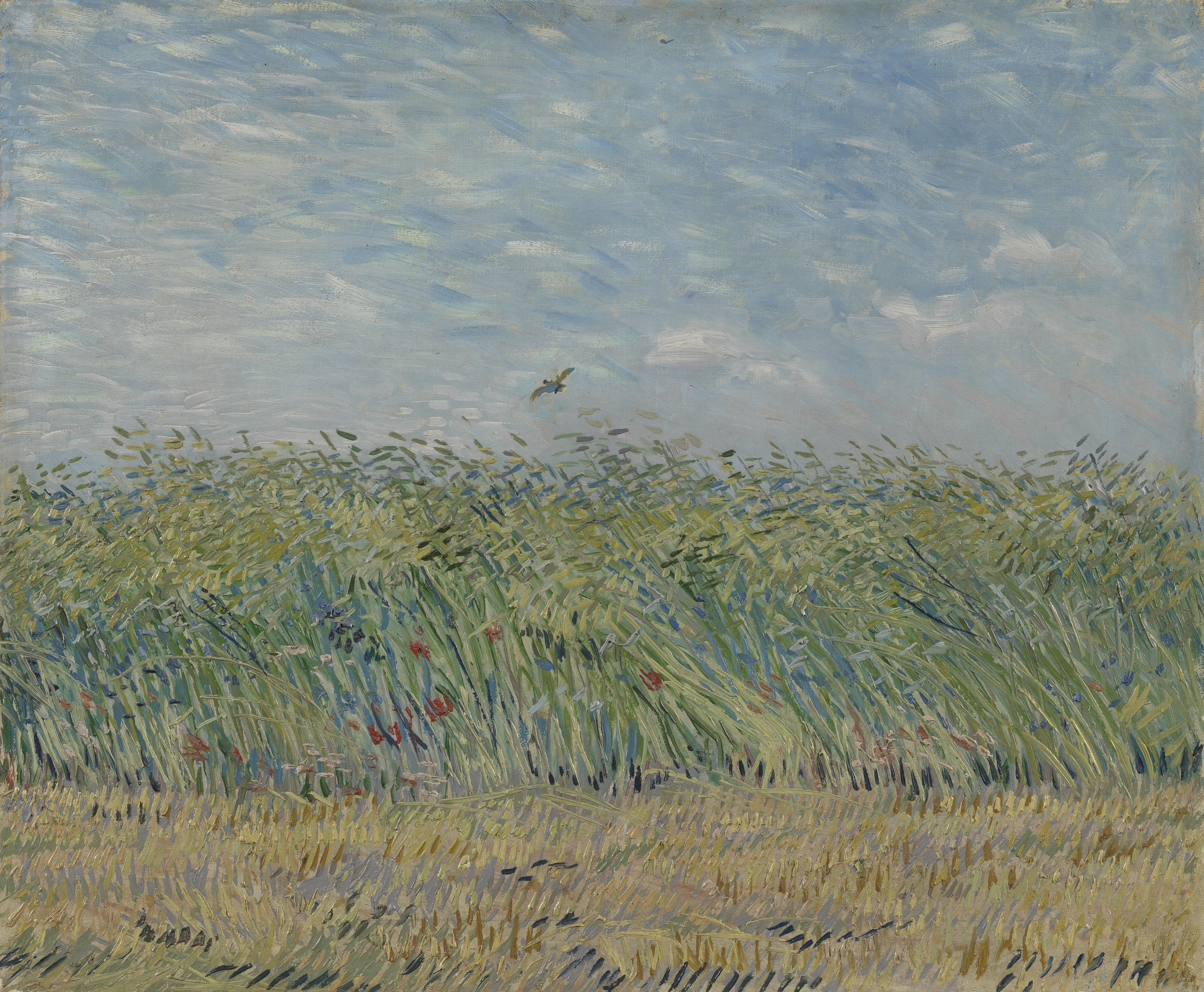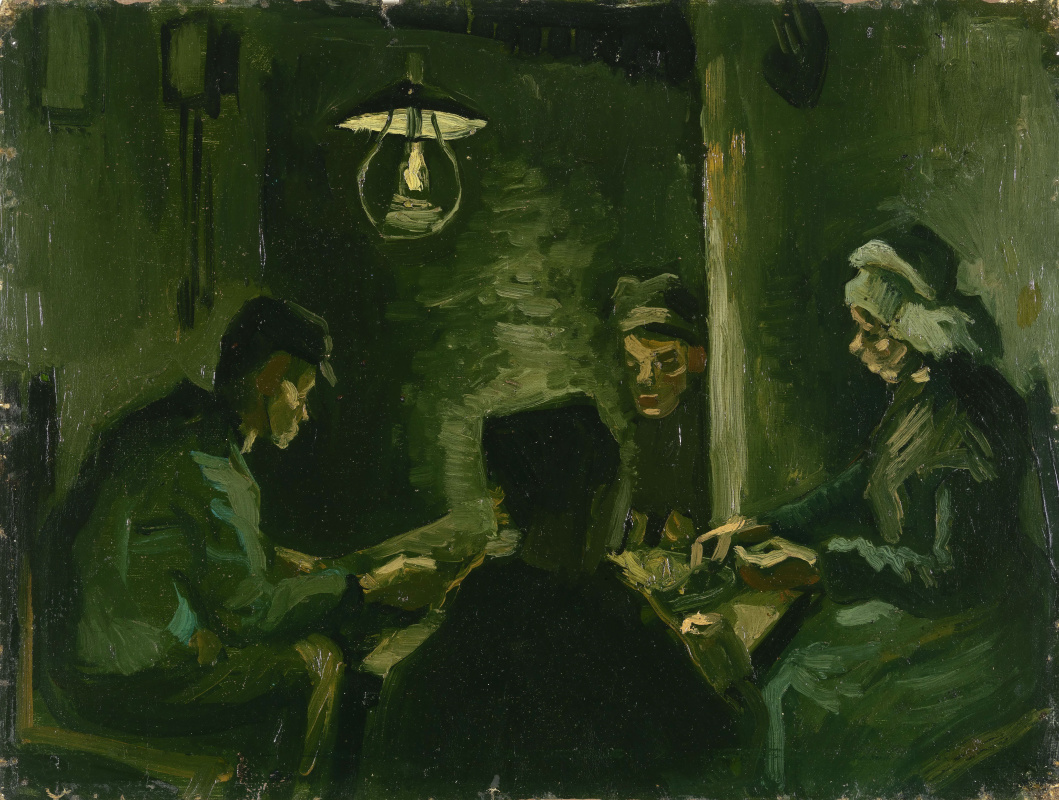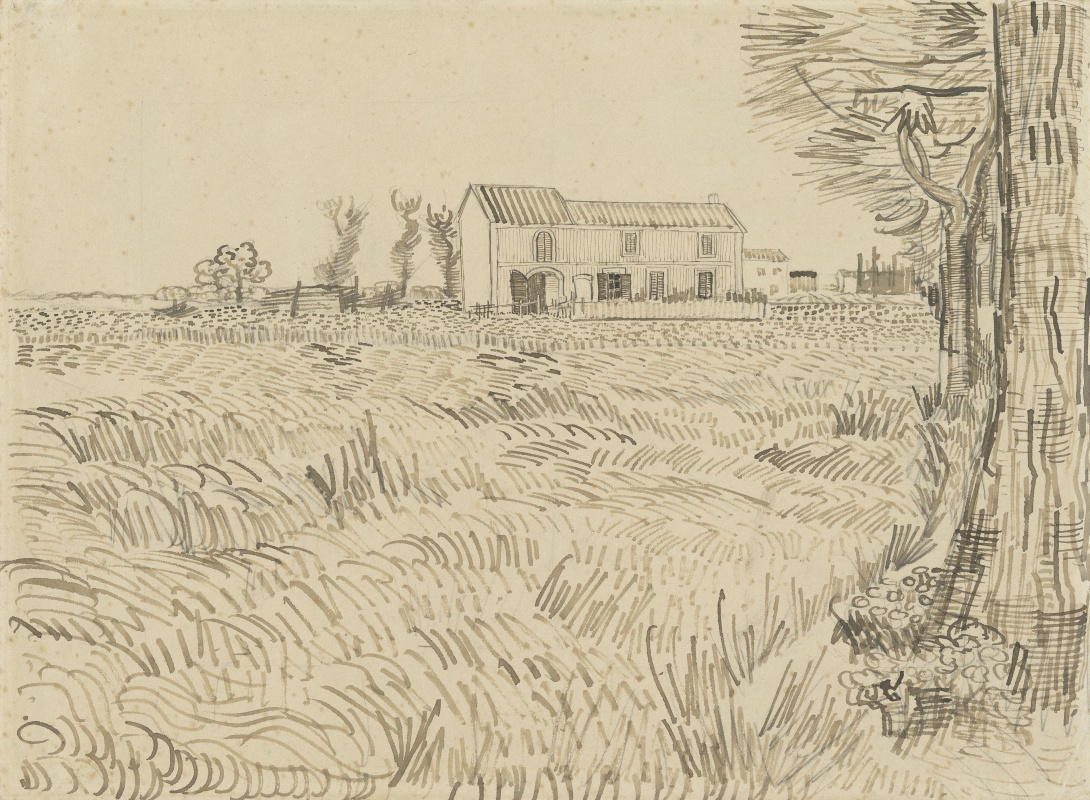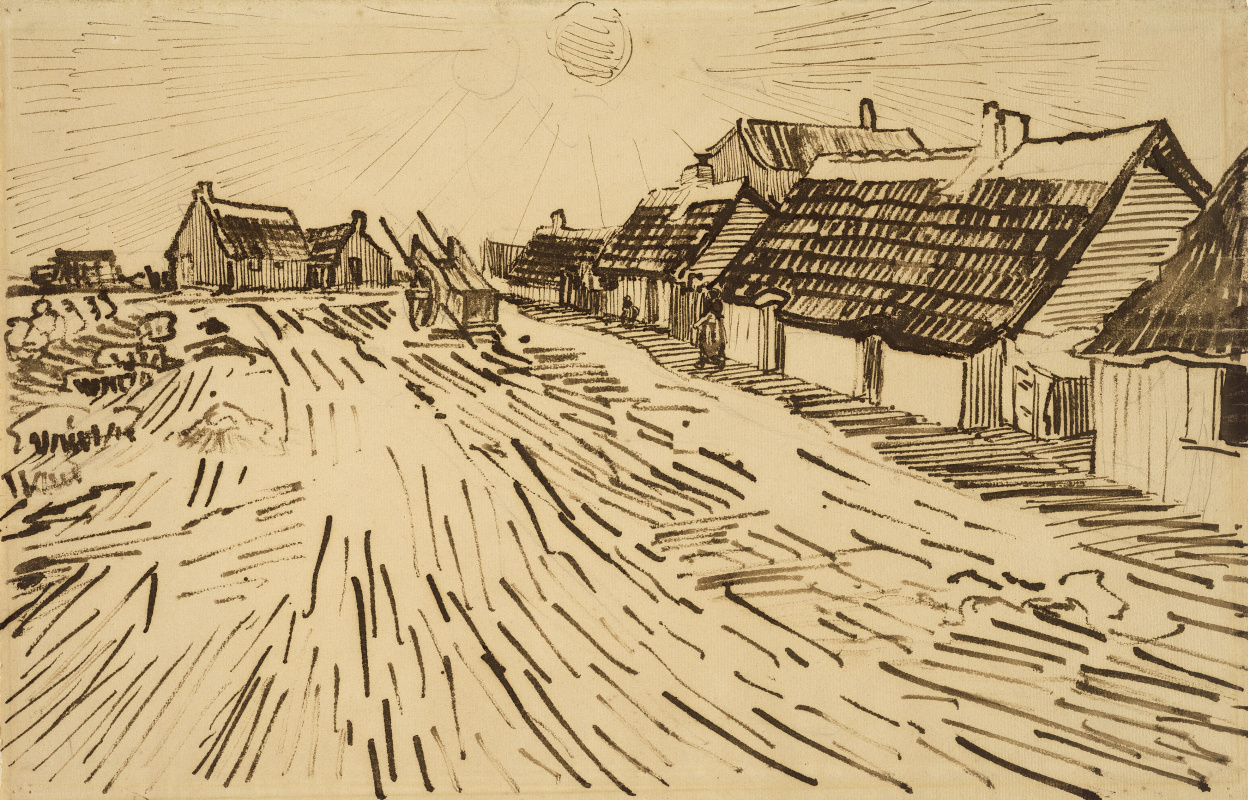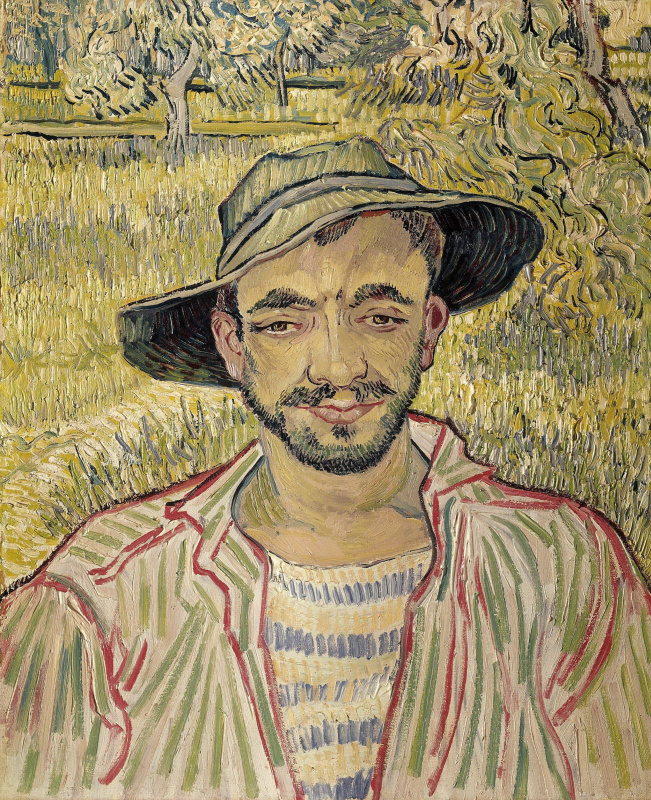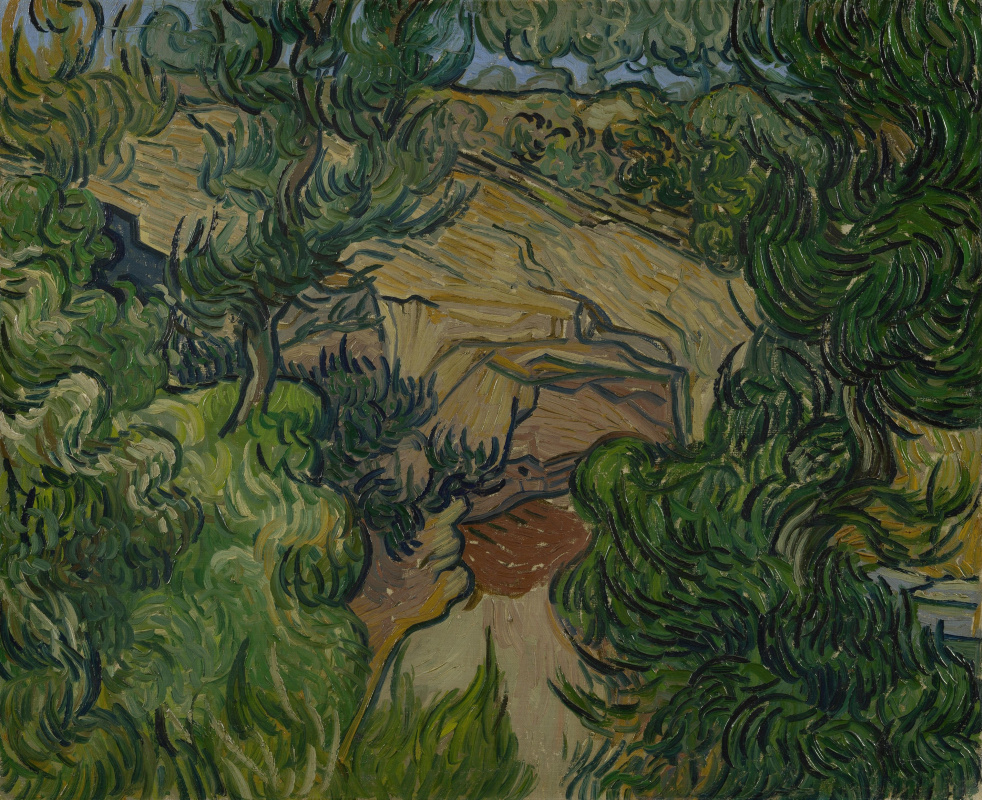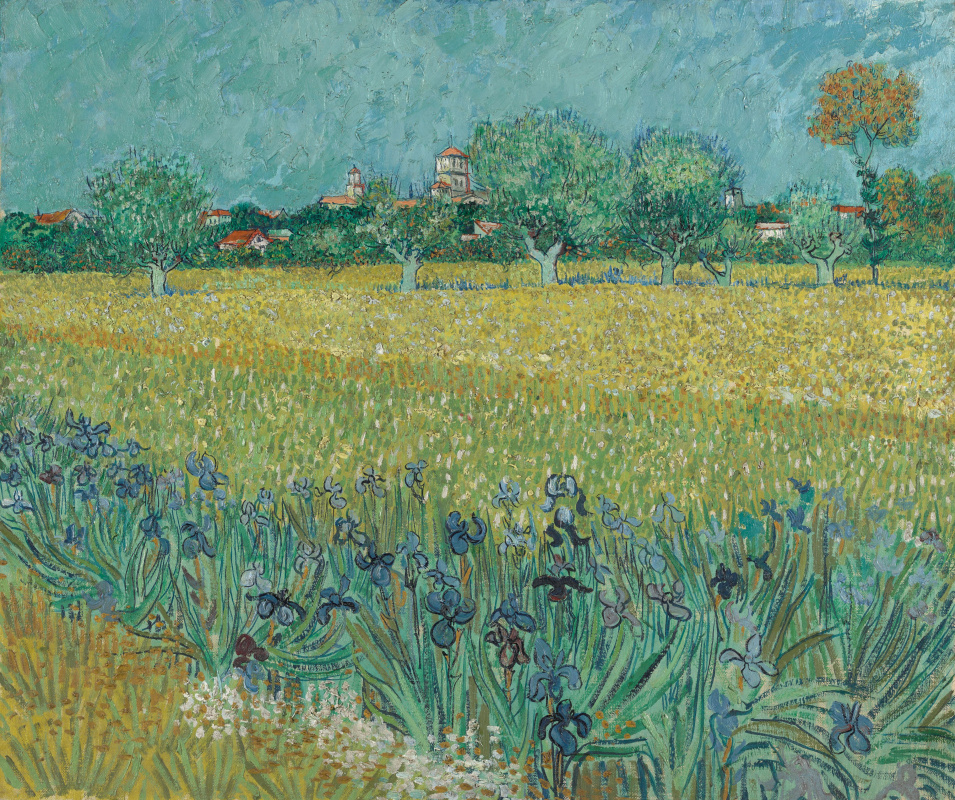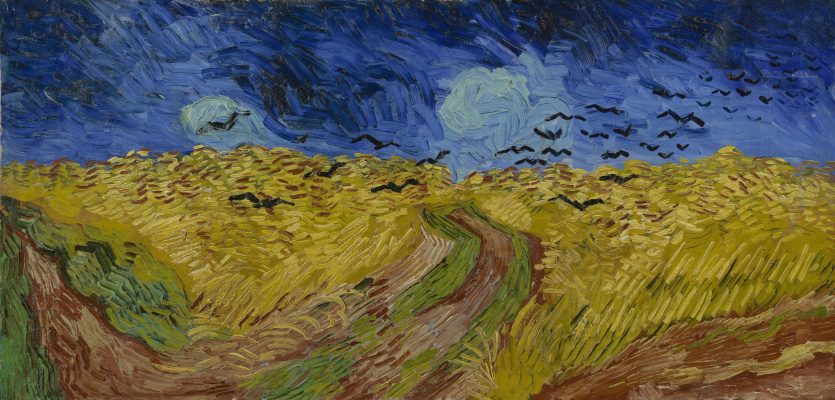"A scene that looks like a painting doesn’t make a painting," says Vincent van Gogh played by Martin Scorsese in the Akira Kurosawa’s "Dreams". "If you look closely, all of Nature has its beauty… I lose myself in it. And then, as if it’s in a dream, the scene just paints itself for me… But it’s so difficult to hold it inside…" Then he responds to the question what he does to release this feeling, "I work! I slave! I drive myself like a locomotive!"
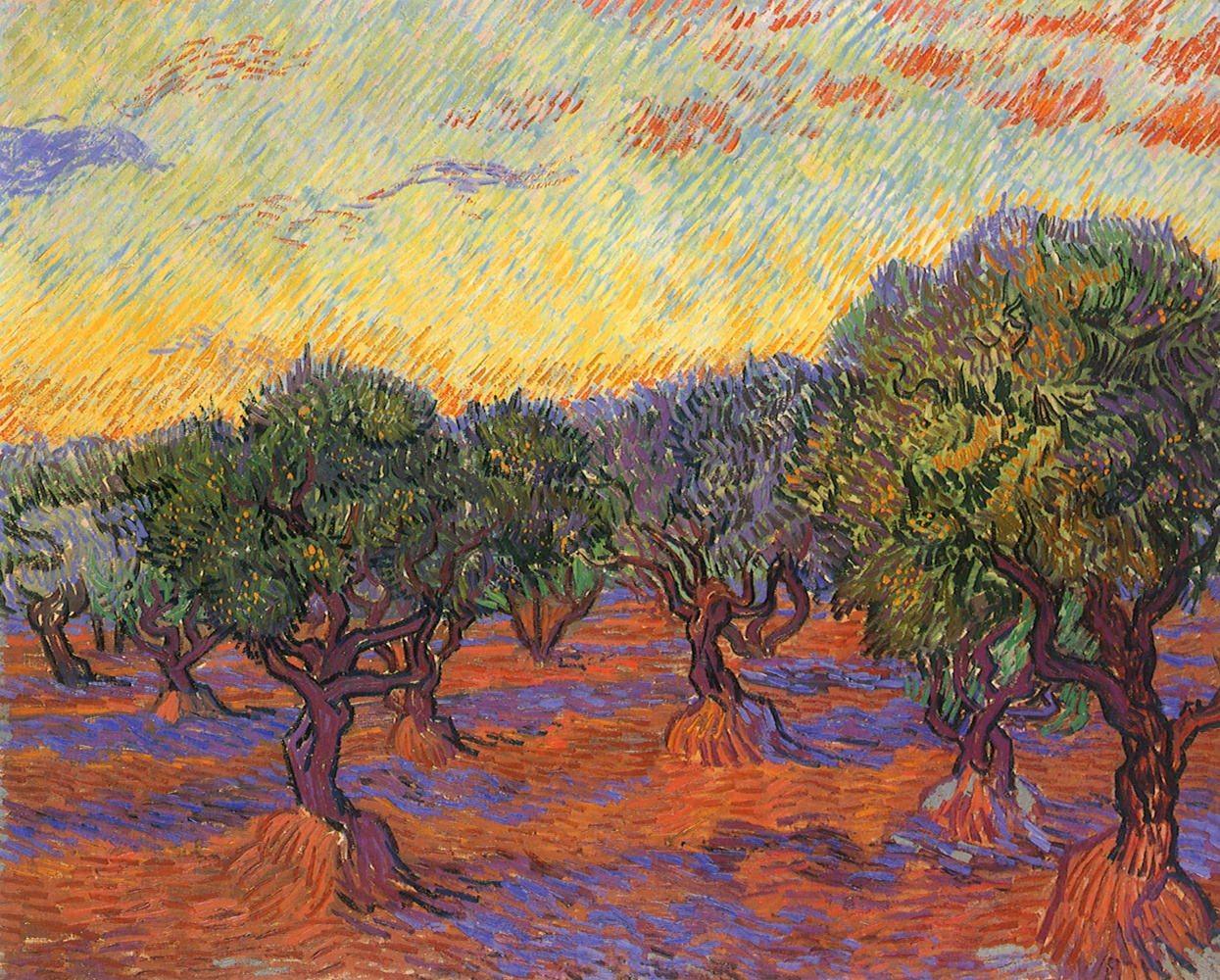
Vincent van Gogh’s canvases are sharp and unrestrained, these traits are also attributed to the artist himself. His artworks frightened his contemporaries, as a man who swallows words scares sometimes. In his short life, Van Gogh was able to sell only a few paintings. He was in despair. However, he did not cease to work hard and develop his style. Today he is one of the most popular artists and his artworks are the most abducted in the world.
Emotions and movement
Van Gogh is a methodical and serious painter. This statement may puzzle someone because of the popular myth that the artist was an obsessive and insane person hitting thoughtlessly canvases with irregular touches of his brush. However, Van Gogh knew materials and tools for painting well, he knew how to use them, and thoroughly thought over his compositions. He was an extremely purposeful person.It’s enough to have a cursory glance at the paintings and drawings by Van Gogh to notice a gradual transition from anatomically accurate works in his early period to more eccentric in his mature years. This slow, but tangible development of the style and technique, makes Van Gogh so attractive for the research. Many artists still continue to use his favorite techniques, such as impasto and drawing from memory.
"My brush stroke has no system at all," Van Gogh wrote to Emile Bernard. "I hit the canvas with irregular touches of the brush, which I leave as they are. Patches of thickly laid-on color, spots of canvas left uncovered, here and there portions that are left absolutely unfinished, repetitions, savageries; in short, I am inclined to think that the result is so disquieting and irritating as to be a godsend to those people who have fixed preconceived ideas about technique." In a letter to his brother Theo van Gogh, Vincent commented on his artistic method, "The shadows and the cast shadows are suppressed; it is painted in free flat tints like the Japanese prints."
Above: Details of Irises, 1889, Almond Blossom, 1890, The Red Vineyards at Arles, c.1888, Irises, 1890 with spots of canvas left uncovered.
Vincent Van Gogh worked sensing urgency. Constantly experiencing stress, he was in a hurry to create as much as possible in a time frame
allotted to him. The artist is well known for his thick dramatic strokes which he used to express emotions and give movement to paintings. Often, he squeezed paint from the tube directly to his canvas. During last 70 days of his life he created one painting a day. Below you can see seven artworks painted by Van Gogh in this grueling rhythm, arranged in chronological order.
First palette
Van Gogh is a self-taught artist. He tried himself in different professions, from a preacher to an art dealer, in the end fully devoting himself to painting. Van Gogh began to paint at the age of 27 in a full confidence that drawing was the first step a great artist should master. So, before working with color, Van Gogh learnt to create black and white images. He read books and textbooks on drawing, comprehended the basics of how to construct figures and landscapes in a right perspective, copied the works of the great masters. He even went to the Royal Academy of Fine Arts in Brussels, but spent only a year there. When Van Gogh had reached the desired level, he began to add color. As time went by, his bold palette became the main feature of his work.
Women carrying coal
01.11.1882, 32×50 cm
Van Gogh created about a thousand of drawings, which, he believed, allowed him to mature as an artist and to study form and movement. Thanks to his sketches, he could quickly catch emotions and lighting, so often he used a pencil before switching to paints. In addition, drawing helped him to cope with depression.
Many art historians consider Van Gogh’s letters to be works of art, as they often contain sketches of paintings he was working on. He had an active correspondence with his younger brother and close friend Theo, as well as with Paul Gauguin. These sketches together with the detailed descriptions clearly illustrate how the artist’s technique and style developed and mastery matured.
In his letters, Van Gogh frequently talks about color. In particular, he explains unrealistic coloring of his painting, "Because instead of trying to reproduce exactly what I see before my eyes, I use color more arbitrarily, in order to express myself forcibly."
His palette changed throughout his life. Early in his career, Van Gogh used dark and earthly colors, such as olive and sienna. The Dutch nature does not abound in bright colors, so the artist preferred to paint portraits of peasants, coal miners, and workers of mining camps. Therefore, he needed a gloomy palette to emphasize poverty and despair. It is highlighted at its most in the Potato Eaters, where a poor family of workers gathered for a meager dinner under a weak lamp light.
"It's impossible to say how many different green-greys there are for example — the variation is infinite. But the whole chemistry of colours is no more complicated than those simple few fundamentals. And a good understanding of them is worth more than 70 different shades of paint — given that more than 70 tones and strengths can be made with the three primary colours and white and black. The colourist is he who on seeing a colour in nature is able to analyze it coolly and say, for example, that green-grey is yellow with black and almost no blue, etc. In short, knowing how to make up the greys of nature on the palette," Van Gogh wrote in a letter to his brother.
"It's impossible to say how many different green-greys there are for example — the variation is infinite. But the whole chemistry of colours is no more complicated than those simple few fundamentals. And a good understanding of them is worth more than 70 different shades of paint — given that more than 70 tones and strengths can be made with the three primary colours and white and black. The colourist is he who on seeing a colour in nature is able to analyze it coolly and say, for example, that green-grey is yellow with black and almost no blue, etc. In short, knowing how to make up the greys of nature on the palette," Van Gogh wrote in a letter to his brother.
Experimenting with palette and brushstrokes
In 1886, Van Gogh moved to Paris. Here he was inspired by the works of the Impressionists and his palette quickly acquired vivid colors. The artist changed his melancholic colors to red, orange, green, blue and yellow, of course. He started experimenting with impressionistic intermittent brushstrokes. At some point, Van Gogh even followed Pointillism , the technique loved by Neo Impressionists: the canvas was hit by clear brushstrokes forming dots or small squares while using only pure colors, which created glowing effect. Self-Portrait with Grey Felt Hat is executed in this technique.Van Gogh is well known for his brushstokes of thickly laid-on paint. This technique is called Impasto. An artist lays a thick layer of paint on canvas, brushstrokes get more noticeable, adding a special texture to the painting. Vincent liked to use a thick, undiluted flat color with a brush or a palette knife. Sometimes he painted his colored swirls, smearing the paint on canvas with his finger. The works of Van Gogh have a relief, almost three-dimensional surface. They look different, depending on the light source.
For example, the richness of the The Starry Night texture was created by adding a thick layer of paint in bold and energetic brushstrokes. Here, the texture of the surface is no less important element than the color, composition or a scene (see details of The Starry Night below).
For example, the richness of the The Starry Night texture was created by adding a thick layer of paint in bold and energetic brushstrokes. Here, the texture of the surface is no less important element than the color, composition or a scene (see details of The Starry Night below).
In Paris, Van Gogh got acquainted with Japanese prints, which deeply affected his technique. He contoured objects with dark outlines, filling them with solid color. The choice of color depended on his mood, at times he limited his palette, as, for example, in Sunflowers, the series which was almost completely done in yellow tints.
Above: paintings that Van Gogh created, limiting himself in choosing tints.
Below: paintings Wild Roses, 1889, Irises, 1890 and their details, demonstrating the technique of contouring, borrowed by Van Gogh from Japanese prints.
Below: paintings Wild Roses, 1889, Irises, 1890 and their details, demonstrating the technique of contouring, borrowed by Van Gogh from Japanese prints.
Economy should be creative
In 1888, Van Gogh left Paris and moved to Arles. Inspired by the play of light and lively colors of Provence at spring, the artist created 14 paintings of orchards in less than four weeks. He seeked to capture everything: wheat fields, bright sun, starry sky, flowering trees. The artist worked in plein air and continued to experiment with his style and technique.At the same time, the painter had to save on everything. To reduce costs, he left the brush and took a reed pen. "…I'm thinking of beginning to draw more with the reed pen again which, like last year’s views of Montmajour, is less expensive and distracts me just as much," Vincent wrote to Theo.
In the monochrome drawings, the artist strove to create an analog of painting by developing its expressive means. He wrote Theo that he re-discovered a reed pen, accompanying his letter with two pen drawings, "These drawings are done with a reed cut the same way as you’d cut a goose quill. I plan to do a series like that. And I hope to do better than the first two. It’s a process I already tried in Holland in the past, but I didn’t have as good reeds there as here."
The pen has changed the artist’s technique, it completely transformed his landscapes. Van Gogh discovered geometry of lines, the sky, full of dots, and power of rounded strokes. Using ink strokes of different types, he creates fascinating rhythm: straight parallel lines, divergent spray of dots, wave-like, spiral curls. Lines convey the texture of an object, so important for the artist. You can feel a roughness, a barb, a smooth flexion. The stroke becomes the most important expressive medium in Van Gogh’s painting.
Vincent van Gogh wanted to set up a 'Studio of the South' in Arles for a group of like-minded artists. Paul Gauguin was the first and the last artist who moved in with him. However, their peaceful collaboration quickly turned into quarrels and conflicts. Two months later Van Gogh was left all by himself.
Communication with Gauguin did not passed in vain for Van Gogh’s art work. Influenced by Gauguin, the artist began to paint from memory. As a result, his canvases got more attractive and less realistic. Van Gogh expressed his emotional reaction to the surrounding reality by means of color and a brushstroke. He chose paints to catch the mood, not to render the reality.
Communication with Gauguin did not passed in vain for Van Gogh’s art work. Influenced by Gauguin, the artist began to paint from memory. As a result, his canvases got more attractive and less realistic. Van Gogh expressed his emotional reaction to the surrounding reality by means of color and a brushstroke. He chose paints to catch the mood, not to render the reality.
Artists always sign their works, but Van Gogh was too picky about himself. He treated many of his works as sketches or attempts. So, he did not put his signature on them, evaluating as not having any special value. The rest of his pictures he signed briefly, only by name — at ease, in a friendly, intimate manner. That’s why he is often called simply Vincent.
"…The sun! It compels me to paint! I can’t stand here wasting my time talking to you!" cuts Vincent in Akira Kurosawa’s "Dreams" disappearing in the perspective of his painting.
"…The sun! It compels me to paint! I can’t stand here wasting my time talking to you!" cuts Vincent in Akira Kurosawa’s "Dreams" disappearing in the perspective of his painting.
Wheat field with crows
July 1890, 50.5×103 cm
Main illustration: Vincent van Gogh, Olive Grove — Orange Sky, 1889; Saint-rémy-de-provence, France. Location: Gothenburg Museum of Art, Gothenburg, Sweden
Writen by: Alexey Kasjanov
Writen by: Alexey Kasjanov






